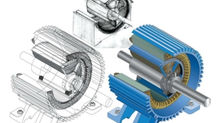HV/MV/LV Transformer Protection Schemes

Transformer protection //
Transformer protection should take into account the power, voltage, vector group and the importance of the unit within a particular system. Depending on these factors, the transformers can be assigned to one of the two groups:
MV/LV transformers
HV/MV/LV transformers and autotransformers
MV/LV transformers
The protection of these units should include overcurrent protection for both the MV and LV windings, plus devices such as overpressure protection (e.g. Buchholz surge), and thermal protection, as indicated in Figure 1 below. Typical ratios for inter- busbar MV/LV transformers at substations are 33/11, 34.5/13.2 and 13.2/4.16 kV.

Figure 1 – Protection scheme for MV/LV transformer
HV/MV/LV transformers and autotransformers
In addition to the protection listed for the MV/LV transformers, the protection for transformers in this group should include overall differential protection, which is essential because of its reliability and high speed of operation. In this case, shown in Figure 2, since the transformer has three windings, a three terminal type of differential protection is required.
The diagram also includes the differential busbar protection, which is usually installed on large transformers connected to HV busbars. As the transformer has an LV winding, overcurrent protection for this winding has been included as well.
"Typical ratios for HV/MV transformers are: 132/33, 145/ 11, 132/11, 115/34.5 and 115/13.2 kV."

Figure 2 – Protection schematic for an HV/MV/LV transformer
It is common to use autotransformers where large powers are involved and the voltage ratio is around 2:1. Typical ratios for autotransformers are 275/132 kV and 230/115 kV.
The protection schemes for autotransformers are very similar to those for HV/MV/LV transformers since autotransformers can be treated as three winding units for protection purposes.
The protection for this type of transformer is essentially the same as that quoted in the previous paragraph, taking into account the modifications to the overcurrent relay connections (see Figure 2).
Reference // Protection of Electricity Distribution Networks – Juan M. Gers and Edward J. Holmes































